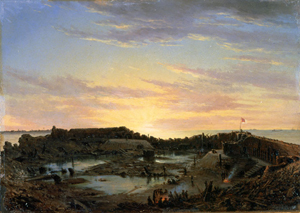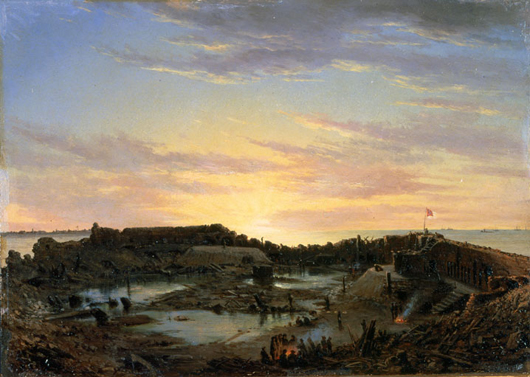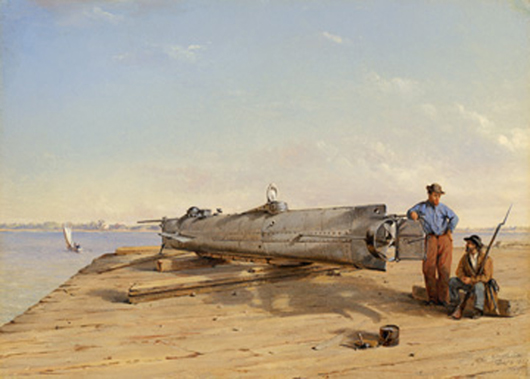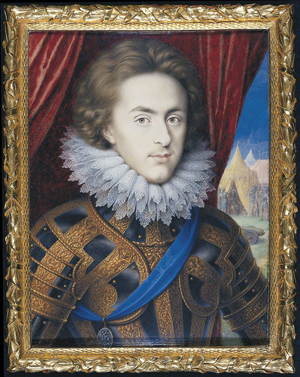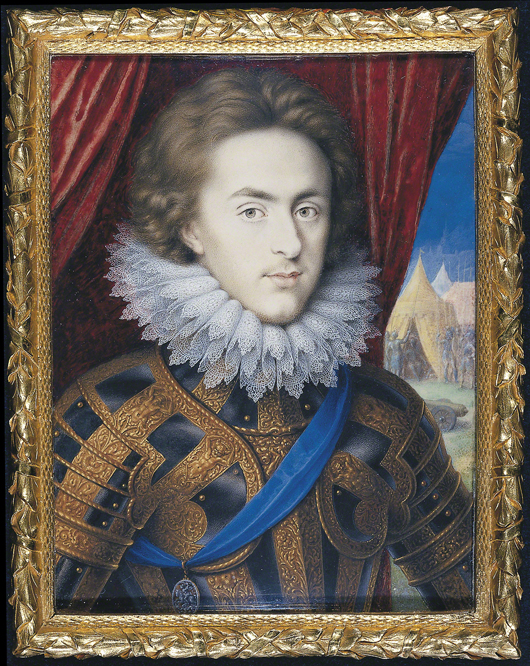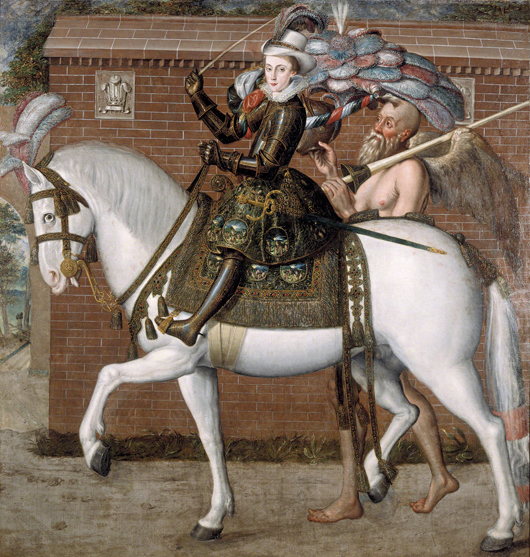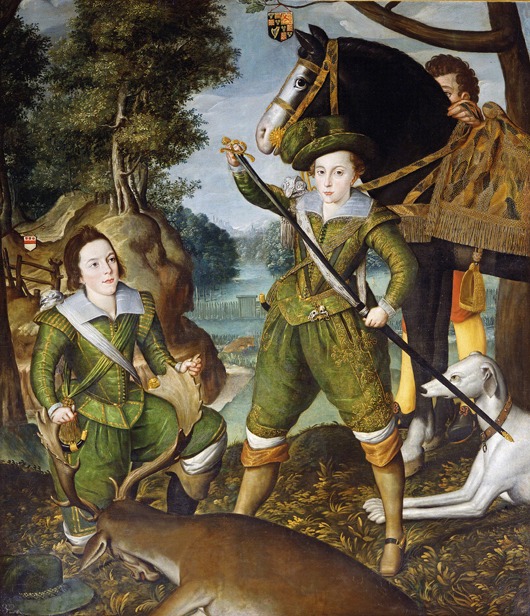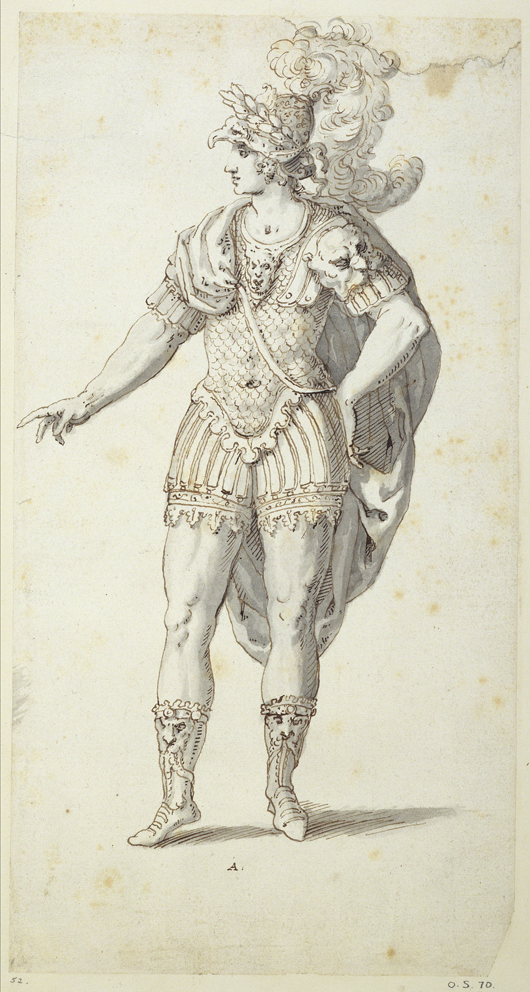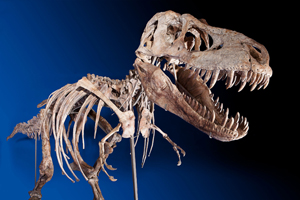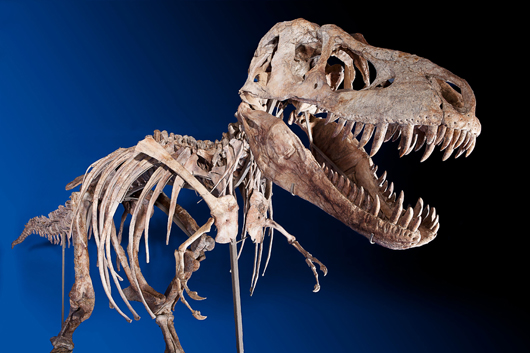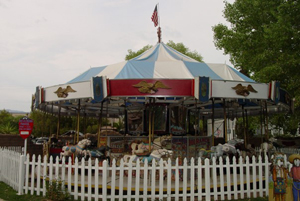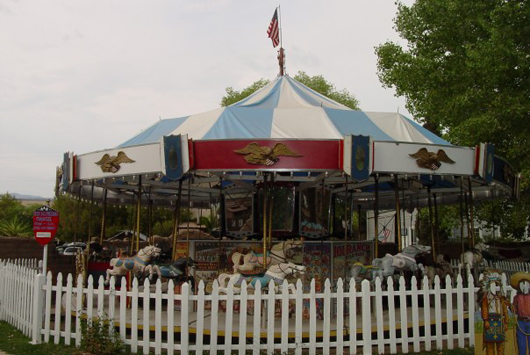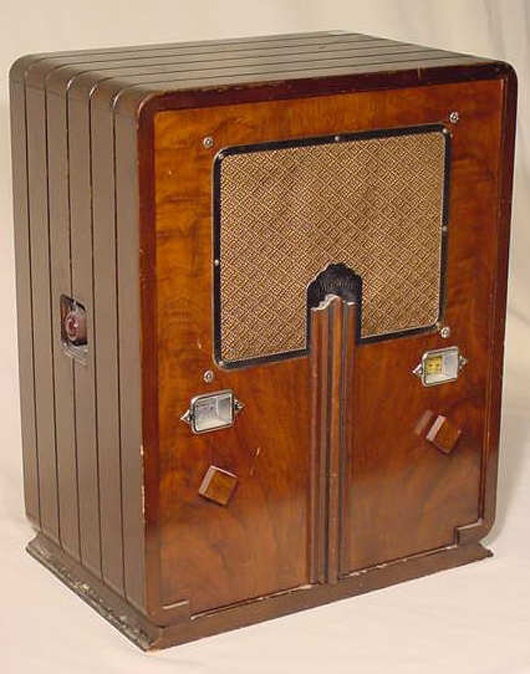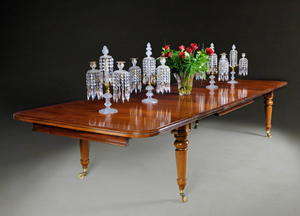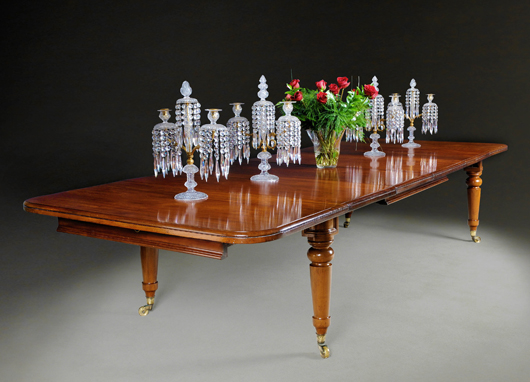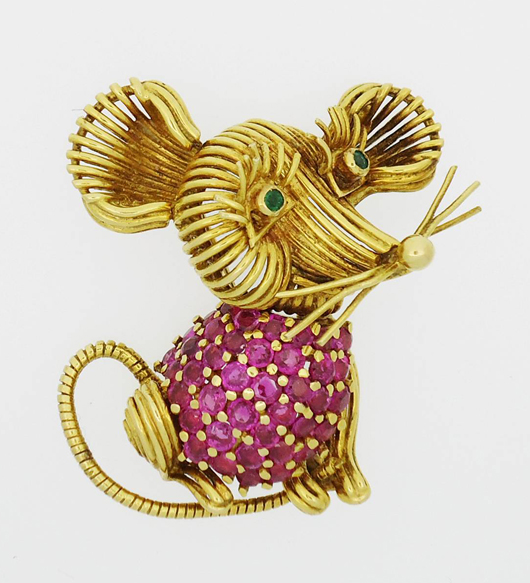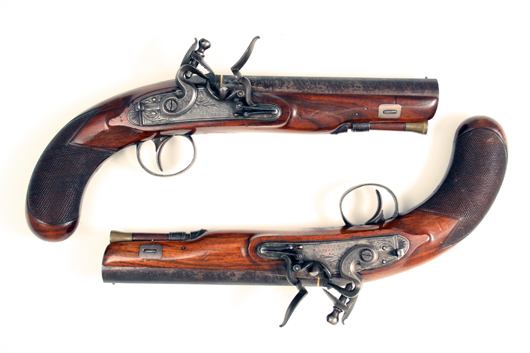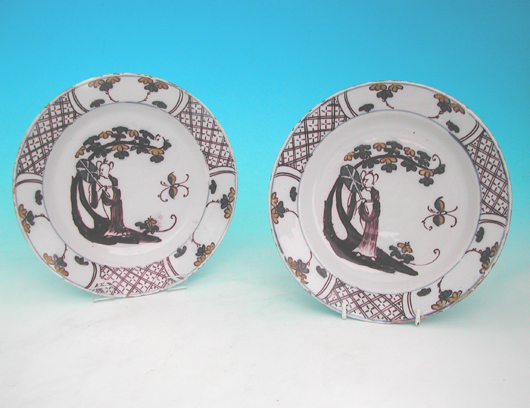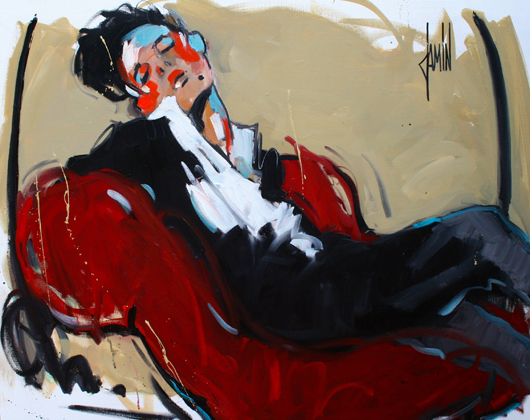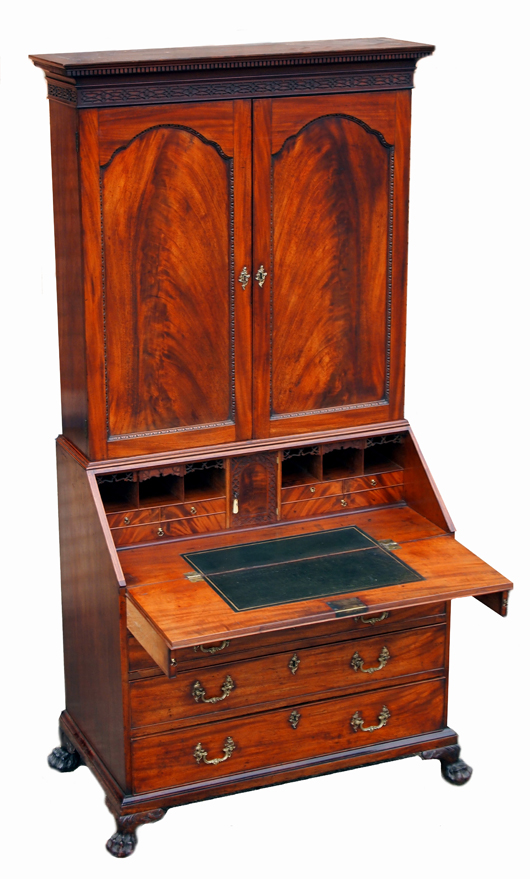
A Shenandoah Valley, Va., bookcase-on-bureau in original surface was the sale’s top lot. It sold for $93,600 to a collector, underbid by a museum. Case Antiques image. KNOXVILLE, Tenn. – A Virginia bookcase on bureau commanded $93,600 at the Fall Case Antiques Auction on Oct. 6, leading a sale bullish on Southern fine and decorative arts and historical material. Prices listed include the buyer’s premium.
The 18th century Shenandoah Valley bookcase on bureau with pullout writing surface was attributed to the Martin-Frye cabinetmaking school of Winchester, Va., and retained its original finish. It descended at the historic Matin Hill / Spangler Hall home and was sold along with a handwritten journal from 1861 inscribed “Names of the Soldiers who have called at Matin Hill.” The buyer, a private collector, was underbid by a Southern museum. Other Southern furniture in the sale included a Federal walnut and yellow pine inlaid secretary-bookcase, $6,084; a Georgia pine huntboard with scalloped drawer decoration, $5,850; and a diminutive Tennessee walnut blind-door corner cupboard, $3,400. A Federal inlaid card table attributed to Baltimore rang up $1,521 while a painted fancy chair, also attributed to Baltimore, realized $819.
An early 20th century watercolor view of a trolley against a dusky Knoxville skyline by Lloyd Branson (1861-1925) sold to an institutional buyer for $7,254 (est. $1,200-$1,800), while another institution purchased a landscape titled November in the Tennessee Mountains by Lorentz Kleiser (1879-1963) for $3,510. It was a new art auction record for the artist, who is more closely associated with New York and California. The same museum also picked up a folk art painting of the L&N Train Depot in Etowah, Tenn., by Frances Patterson (20th century) for $1,521 (est. $600-$800). A landscape by an unknown artist, picturing the home of early Middle Tennessee settler Richard Alexander, with a steamboat on the river beside it, reached a surprising $3,744 (est. $300-$400), while a large landscape with cattle beside marshes, signed and dated 1889 by George Reicke (1848-1930), who was painting in Louisiana during that period, realized $2,691. An oil on canvas depiction of President Andrew Jackson’s home, The Hermitage, by Mayna Treanor Avent (Tennessee, 1868-1959) brought $1,287, the same price as a pastoral Tennessee oil landscape by Thomas Campbell (1834-1914). A floral still life by Eleanor Wiley (Tennessee, 1876-1977) doubled expectations at $1,755, and an abstract/figural oil on canvas set an auction record for mid-20th century East Tennessee painter Robert Birdwell at $1,170.
The top-selling painting of the day was a winter landscape by New Hope, Pa., painter Kenneth Nunamaker. The oil on canvas, titled Choar Time, attracted seven phone bidders and competed to $18,720. A rare complete set of 18 photographic prints from Ansel Adams’ “Yosemite” portfolio closed at $16,380, while a fall landscape by Western painter Conrad Schwiering turned in $5,760. A vividly colored painting of a barnyard with cows by David Burliuk (Russian/American, 1882-1967) reaped $3,744. A circa 1810 unsigned miniature watercolor on ivory portrait, inscribed on back, Dr. David Wharry, also brought $3,744, while a full-size early 19th century English portrait of a gentleman, identified as Sir Edward Turner Bart, sold to an overseas buyer, bidding by phone, for $3,276. A17th century Tintoretto school sanguine drawing sold to an internet bidder for $1,320 (est. $600-$800). An abstract bronze sculpture by Victor Halvani (Egypt/Israel, born 1930) titled David With the Sling, shot to $960 (est. $300-400) and two Joan Miro lithographs from Je Travaille Comme Un Jardinier brought $1,020 and $878.
Pottery is traditionally an important category at Case. Company president John Case is a passionate scholar of Southern pottery and the company holds records for Tennessee and Kentucky pottery at auction. This sale was highlighted by a piece appropriate for election season: an East Tennessee-made harvest jug with inscription for President James A. Garfield. The unusual form with extruded handle and opposing spouts was likely made to commemorate Garfield’s 1880 victory; it competed to $8,190. An East Tennessee green glazed redware jar with sine wave incising, attributed to the Cain pottery, sold for $2,574 despite a hairline and broken handle, while a West Tennessee 6-gallon stoneware jar with crimped medial flange attributed to T.W. Craven brought $2,106 despite rim and handle chips. Tennessee and Kentucky-marked whiskey jugs were also in demand, bringing from around $300 per piece up to $643 for a “Perrows Place” Knoxville example. Case also continues to add more examples of Southern Art Pottery to its lineup. This sale featured two good pieces of Newcomb College Art Pottery decorated by Leona Nicholson (1857-1929). Her large loving cup with yellow glaze and blue flowers realized $5,382 against a $2,000-$3,000 estimate and a 9-inch vase with relief decorated tulips doubled its high estimate to earn $2,808.
One of the most intriguing items in the auction was a printed copy of the controversial “Mecklenburg Declaration of Independence” – which some claim happened in North Carolina a year before the one in Philadelphia. The original, if it ever existed, is believed to have been burned in a Revolutionary War attack on the home of one of its signers, Dr. Ephraim Brevard. Early copies are few and far between. This one, circa 1830, was consigned by a descendant of Brevard. Estimated at $700-$1,000, it sold for $6,084. Other historic documents in the sale included a set of eight documents concerning the 1st Brigade, Tennessee Volunteers during the War of 1812, $2,520; an archive related to Gen. Benjamin “The Beast” Butler’s seizure of gold in New Orleans during the Civil War, $1,560; a letter of appreciation to President Franklin Pierce signed by his entire cabinet including Jefferson Davis, $960; and a 1928 plat book of Chattanooga with several large city street maps, $1,170. Two letters, written and signed by President John F. Kennedy and his brother, Attorney General Robert Kennedy to a U.S. marshal wounded during the University of Mississippi integration riots of 1962, brought $1,755 and $1,521 respectively.
Weapons did well, with a Harper’s Ferry U.S. Model 1803 flintlock rifle (one of 1,600 made in 1814) selling for $4,680 (est. $2,000-$2,200); a circa 1850 derringer attributed to J.E. Merriman of Memphis, $3,510; and a Seigfried Waffen hunting dagger, $819. There was also healthy demand for a collection of canes, many of them concealing weapons, including a rare English mechanical flick stick cane with ivory handle, $1,170; a dog head ivory handled cane with bone shaft, $960; and a gentleman’s silver-plated dress gun cane with wooden grip and a Day’s patent .56-caliber under-hammer percussion gun cane, both $840.
Southern Textiles included a sampler with floral border made by Sarah Donoho of Middle Tennessee in 1835, which sold at the top of its estimate for $3,600, and an appliqued wool wall hanging by Kate Clayton (“Granny”) Donaldson of Brasstown, N.C., (1864-1960) with farm animals, $1,404 (est. $200-$400). Two 19th century Middle Tennessee floral patterned quilts brought $527 apiece.
While “Jim Crow” items are usually associated with the United States, an English silver presentation cup in the sale hinted at the international success enjoyed by T.R. Rice, creator of the Jim Crow Minstrel Show. The cup and cover, originally made in 1765, was redecorated and inscribed in 1837 by The Jim Crow Club of London and presented to Rice during his tour stop in the city. It sold for $3,000 to a Southern collector, underbid by the Jim Crow Museum at Ferris University (which uses such objects to teach tolerance).
Silver as a category did consistently well, including a mid-century Maciel Mexican silver tea service with tray, $6,318; and a rare mirrored sterling plateau in a floral repoussé pattern by Jacobi and Jenkins of Baltimore, $1,800. A circa 1850 coin silver tipped walking stick, the first known marked piece by Lebanon, Tenn., silversmith James Ragland, brought $1,140, and a New Orleans-made Hyde and Goodrich soup ladle earned $643.
Case’s auctions consistently attract a significant number of bidders from Asia. Highlights in this sale’s Asian category included a large Meiji ivory okimono figure of a reclining man with children playing at his feet, $1,638, and a signed Japanese Art Deco period bronze figure of three cranes with a glass ball balanced atop, $1,080. A Chinese carved celadon jade libation cup with dragon handle brought $840, the same price as a Chinese yellow ground porcelain bottle vase in the Hundred Butterflies pattern and a pair of Famille rose bowls with robin’s egg color ground and bird decoration, all 20th century. A Cultural Revolution ivory figure of a child with sheep sold for $780.
A large mid-20th century Navajo Ganado rug with diamond design on red field led a selection of Southwestern material, much of it consigned by a single Middle Tennessee collector. The rug sold for $3,000 (est. $1,000-$1,500). A 5-inch-tall San Ildefonso polychrome jar by Blue Corn (Crucita Calabaza, 1920-1999) realized $1,287, while a Blue Corn redware jar of the same size made $660, and a 6-inch-tall San Ildefonso blackware jar by Tonita Martinez Roybal (1892-1945) tripled its high estimate, hitting $1,170.
There was good buzz surrounding a collection of breweriana, most of it from the Chattanooga Brewing Co., driven out of business by Prohibition. A scarce advertisement on canvasboard depicting a young woman in sailor dress, holding a bottle of Faultless Lager, served up $2,640. A lithographed tin picture of the company’s plant brought $1,800, and a framed 1907 paper cutout calendar, depicting an attractive woman, charmed its way to $1,404 against a $200-$300 estimate. A framed pair of advertising pennants for Reif’s Special and Reif’s Tripure flew to $780 (est. $300-$450), and an oval Reif’s advertising lithograph sign sold for $936 (est. $300-$400). It took $600, double the high estimate, to buy a circa 1900 Adm. George Dewey round clear glass flask, lotted with a Prohibition-era porcelain ring flask, labeled and in the form of a “Life Preserver.”
Clocks did well, with a Welch and Strong rosewood mantel clock ticking to $760, the same price as an Aesthetic Movement hanging clock with female bust and griffins, believed to have hung in the Hotel Lafayette in Buffalo, N.Y. A Classical period shelf clock with reverse-painted glass panel depicting a train, with label for Wadsworth & Co. Augusta, Ga., hammered down at $643.
Other standouts in the sale included a cast-iron turkey doorstop attributed to Bradley and Hubbard, $2,808, a Lalique Deux Poissons glass sculpture of intertwined fish, $1,320, and a pair of Lalique Reverie nude bookends, also $1,320. A set of 24 William Yeoward crystal glasses in the Fern pattern reached $1,560. A 14K gold, opal and black Victorian style enamel brooch/pendant sold for $960 and a lot of Victorian mourning jewelry including Whidby jet beads and a 14K gold flip ring made $760. A set of 10 Colonial Revival Chippendale style dining chairs earned $1,920, a pair of L and J.G. Stickley oak side tables brought $1,320, and a mid-century modern Isamu Noguchi IN-50 coffee table with black lacquered base realized $780.
Case is accepting consignments for its Winter Cataloged Auction, to be held Jan. 26 at the company’s gallery in Knoxville. For more information 865-558-3033 or the company’s Nashville office at 615-812-6096 or email info@caseantiques.com.
Click here to view the fully illustrated catalog for this sale, complete with prices realized.
ADDITIONAL LOTS OF NOTE
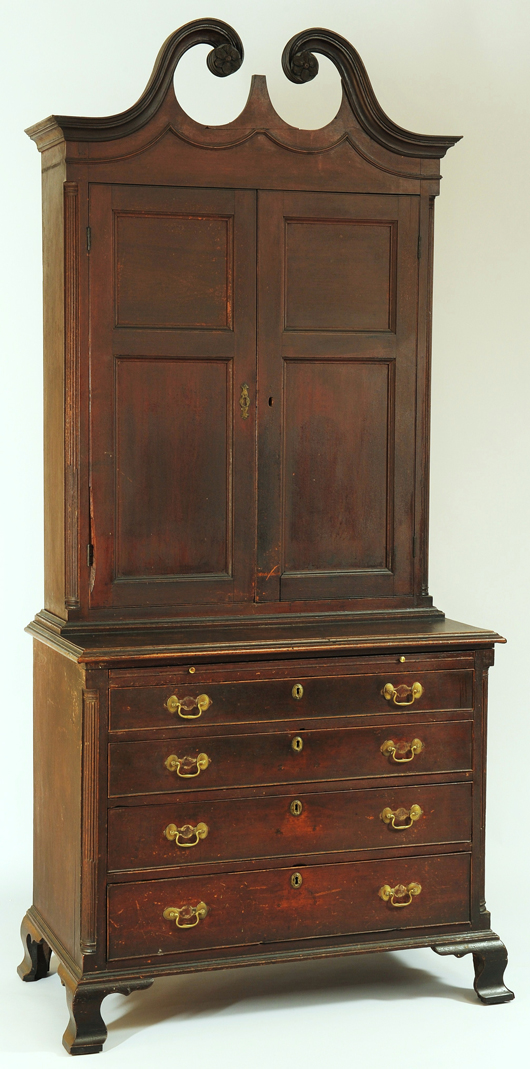
A Shenandoah Valley, Va., bookcase-on-bureau in original surface was the sale’s top lot. It sold for $93,600 to a collector, underbid by a museum. Case Antiques image. 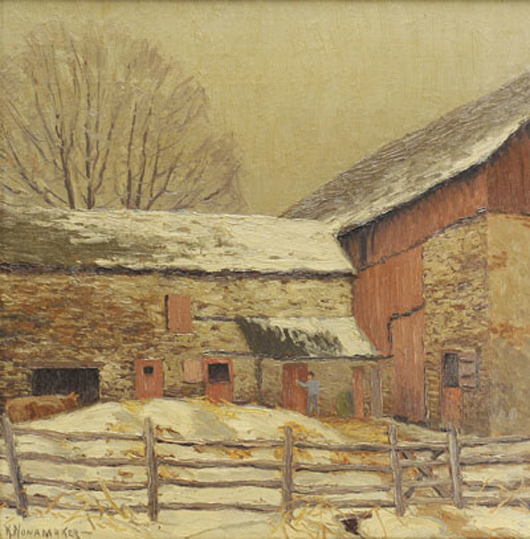
Seven phone bidders battled it out for this winter landscape by New Hope, Pa., painter Kenneth Nunamaker, titled ‘Choar Time.’ It worked its way to $18,720 (est. $5,000-$7,000). Case Antiques image. 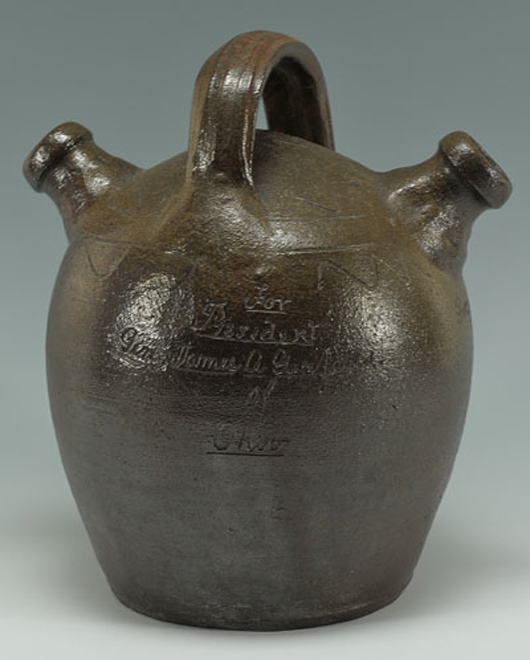
A timely piece, this East Tennessee pottery harvest jar commemorated the 1880 election of President James A. Garfield and tallied $8,190 (est. $2,500-$4,500). Case Antiques image. 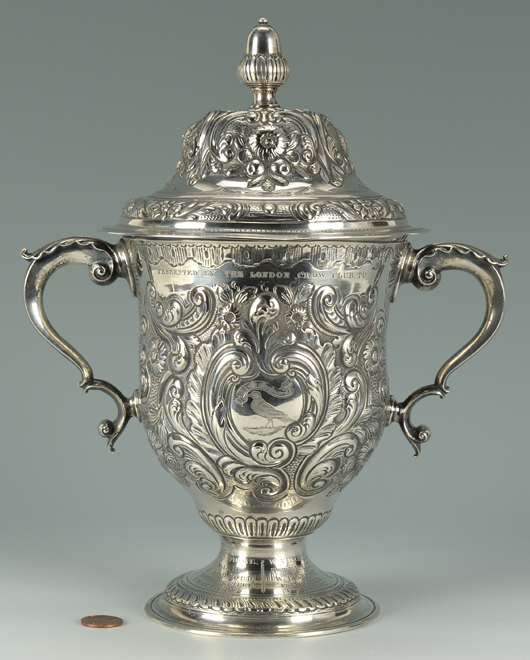
A 1765 George II silver cup and cover with later decoration and inscription ‘From the Jim Crow Club of London to T.D. Rice,’ sold for $3,000. Rice received the cup when he brought his ‘Jim Crow Minstrel Show’ to London in 1837. Case Antiques image. 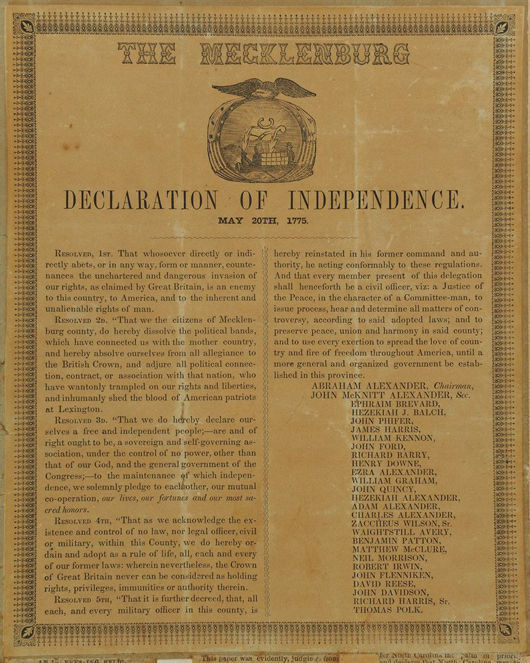
Leading the historic document category was this circa 1830s printed copy of the so-called Mecklenburg Declaration of Independence, reputedly made in North Carolina a year prior to the one in Philadelphia. It sold for $6,084. Case Antiques image.




